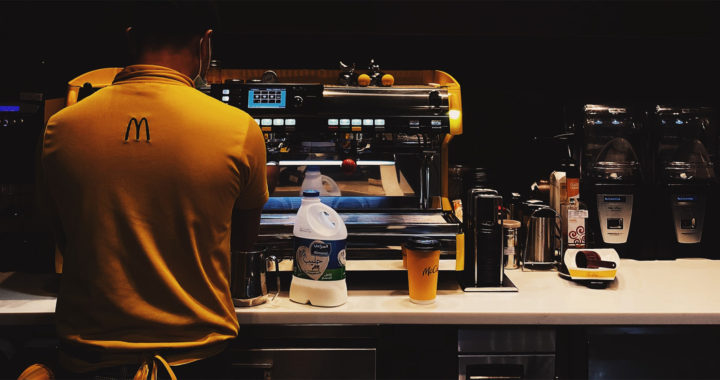McDonald’s Corporation has a global footprint that has made it one of the most successful American companies in the world and a true global brand. The United States is its largest geographic market but its chain of restaurants can be found in over 100 countries across the world. It has a significant presence in Europe, South America, and Asia and the Pacific. A critical element of its marketing mix and overall business strategy is its specific distribution strategy. The same strategy has been central to its global success.
Understanding the Distribution Strategy of McDonald’s Corporation: Strategic Principles and Elements, and Channels of Distribution
1. Principles and Elements
The distribution strategy of McDonald’s rests on two main principles. These are maximizing its market reach and utilizing all avenues of sales while also ensuring effective and efficient distribution of its products from its warehouses to the stores and further down to the consumers. Implementing these strategic principles has required it to adopt several models and concepts or elements in its distribution strategy. Take note of the following:
• Franchising Model: A specific factor contributing to the business success of the company is its franchising business model. It still owns and operates several stores in selected geographic markets but it also licenses its brand and the sales of its products to other companies that seek to own and operate their own McDonald’s restaurants This model has allowed the company to expand its global footprint and maintain its global presence without needing to operate its own stores.
• Hub-and-Spoke: The distribution strategy of McDonald’s also follows a hub-and-spoke model. This involves operating a large distribution center or central hub responsible for providing stores or spokes with food, packaging materials, and other relevant supplies, and managing procurement, inventory, and quality control. The hub-and-spoke model enables the company to achieve economies of scale and maintain consistent product quality and standards across its vast chain of restaurants.
• Intensive Distribution: Maximizing further its market reach and all avenues of sales requires executing an intensive approach to distribution. It specifically involves utilizing all channels of distribution and setting them up in geographic markets to ensure the brand remains visible and that its products are available. This approach also involves aggressive marketing to attract more franchisees and specific operational processes such as 24/7 operations and out-of-restaurant dining experiences.
• Global Push and Pull: The marketing strategy of McDonald’s also utilizes a specific pull and pull approach. Pull marketing focuses on creating a demand to encourage potential franchisees while push marketing centers on getting the products to the target consumers. This approach depends on a specific promotional strategy and more specific promotional activities such as advertising and sales promotion. It essentially supports the distribution strategy of the company through promotional activities.
• Supply Chain Management: Managing the supply chain is a different set of activities within the company but its purpose and functionalities overlap with the implementation of its distribution strategy. The company uses different techniques in supply chain management to support the operation of its stores, including franchisee-owned stores, and effective and efficient distribution of its products. These include demand forecasting, inventory management, vendor management, and logistics.
The utilization of the aforesaid strategic elements makes the entire distribution activities of the company complex. It is still important to notes the fact that these elements work together to meet its defined strategic purpose and the specific goals and objective of the strategy. These elements are also critical components of its operations. The company is still looking for newer concepts, models, and approaches to expand further its global market reach.
2. Distribution Channels
A simpler understanding of the distribution strategy of McDonald’s Corporation entails taking a look at its specific channels of distribution. Remember that the company intends to maximize its market reach and utilize all relevant avenues for sales. This has compelled it to adopt a multichannel approach to distribution that includes traditional channels and novel approaches to reaching a global pool of customers. Take note of the following:
• Direct Channels: The direct distribution channels of McDonald’s include all restaurants and even kiosks or pop-up stores that it owns and operates. Most of these stores are located in North America but there are also several stores in Europe, Japan, and China. These stores account for 8 percent of its global chain of restaurants.
• Indirect Channels: Franchisees represent the indirect distribution channels of the company. Some of these operate as large corporations with multiple stores while others are smaller business organizations that own one or few stores. Partnered retail stores such as convenience stores are also indirect distribution channels.
• Online Channels: The company has also utilized various online mediums for its online distribution. These include its own delivery operations coursed through its website and mobile app. It has also partnered with platforms such as Uber Eats in the U.S. and Grab Food and Food Panda in Southeast Asia for online deliveries.
It is interesting to note that part of the strengths of McDonald’s is its two-fold revenue model. It generates revenues not only through restaurant operations but also through rent from its real estate properties. The company purchases and develops lands in strategic locations within a specific geographic market. These lands are then leased to its franchisees. Its real estate operation is critical to its global expansion and distribution strategy.
The company has also made significant investments in technology to improve its delivery operations. It has upgraded its technological infrastructure and expanded its digital assets to make online deliveries more convenient for its restaurants and customers. It uses customer relations management, artificial intelligence, and digital marketing to target customers, improve digital user experience, and provide personalized services.





